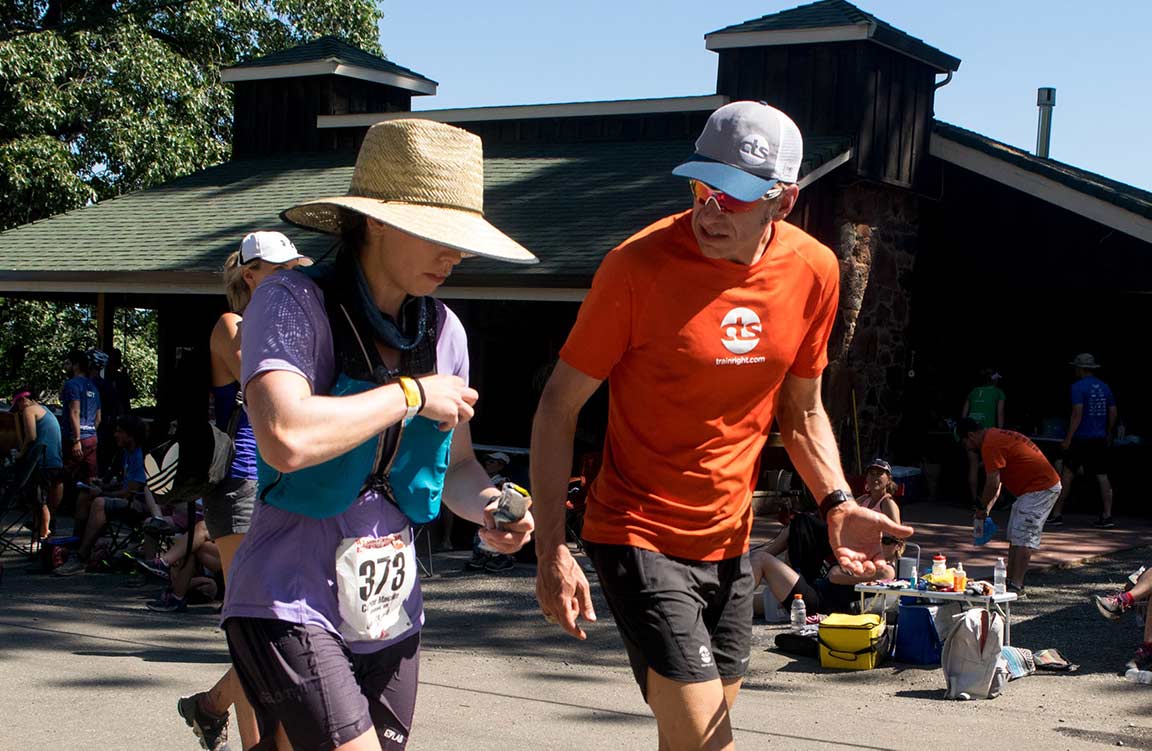
The Power of Subjective Feedback in Athletic Training
By Jason Koop,
Head Coach of CTS Ultrarunning
In a perfect world (or at least my version of it) all endurance athletes would have a coach. Sure, this sounds self-serving considering that I make my living in the profession, but the fact of the matter is professional coaches (and other professionals that work with athletes) can do a better job guiding athletes than athletes can when left to their own accord. Coaches can provide expertise, and also outside perspective that athletes can lean on to inform their training and development. One such area where this comes to light is harnessing the power of subjective feedback, and subsequently adjusting training. Regardless of whether you have a coach or not, are using a static training program, or are designing your own training, with a few simple skills and insight you can customize your training based on your subjective responses to training and day to day activities. Below are some key aspects derived from subjective feedback, how I interpret the feedback, and how I then adjust training accordingly.
Why Subjective Feedback Matters
CTS Coaches use a training tool called TrainingPeaks as a means of prescribing, tracking and analyzing training for endurance athletes. One of the niftier (and simple) features of TrainingPeaks is that it will automatically send you (and your coach if you have one) notifications when you have completed a workout. I know this is not groundbreaking, but there is a subtle wrinkle in how the notifications are handled that is insightful. The system has been designed in such a way that it actually holds the e-mail in a queue until after the athlete has had the opportunity to enter any subjective feedback (which TrainingPeaks’ calls ‘Post Activity Comments). This feature was initially intended to be an e-mail saver, in that the coach is not getting one e-mail on the file upload and then another after the comments are entered. For athletes it has somewhat unintentionally put more focus on entering said post activity comments, as gratification derived from looking at your pace, vertical gain and segment PRs is delayed until you do so.
Think about it for a second. When you finish your run, you are instantly flooded with a slew of data from your watch and other places that data goes, such as Strava and the native apps associated with the watch. You get your time, pace, distance, heart rate, and any ‘best efforts’ you’ve set along the way, as soon as you push stop on your watch. The instant gratification derived from this process automatically puts you in the mindset that training is complete. After all, if you know how far you have run, how much vertical gain you did and which segment PRs you nabbed, what else is there?
By holding this notification in a queue, TrainingPeaks is subtly saying to you, “Hey, your workout is not done yet. You still need to tell your coach how it went.” And I have to say, I love that the workout is being held hostage for a just few minutes while subjective feedback can be formulated. It puts priority on this qualitative form of information.
Analyzing training should always starts with, “How did it go?” As a coach, before I dive into the minutia of paces, Normalized Graded Pace (NGP), vertical gain and the slew of data generated from that tiny computer on your wrist, I first look at the athlete’s perception of the workout. Don’t get it twisted, the technical detail of the workout matters a tremendous amount. If you scrutinize NGP, total volume, cumulative training load and other variables over long enough periods of time, you glean valuable insight as to how the training is progressing. However, the detail of how an athlete personally describes the workout tells me just as much, if not more, about fitness, fatigue, motivation and even the athlete’s strengths and weaknesses.
What to say about your workout
If you are just starting to record subjective feedback for the first time, or if you are just beginning training for the first time, recording subjective feedback can be intimidating. After all, it’s much easier to just press a button to track and have a digital record of your run for eternity. Recording subjective feedback requires some thought and effort, but it’s worth it at the end of the day. I have athletes focus on three areas of feedback:
How it went
“How did you feel?” This is the first question I ask any athlete after a workout. It’s also the question you should start out with when organizing your subjective feedback. Don’t overcomplicate this. All you need to encapsulate are some simple feelings about how the workout went. “Felt good today” is just as, if not more, insightful than a whole Shakespearian soliloquy about every contemplation, feeling, doubt, insecurity and fleeting thought you can pry from your memory banks.
Over long periods of time, you can use “How did you feel?” to help home in on your strengths and weakness and what you need to work on at certain periods of time. For example, if you notice that you have a more difficult time doing RunningIntervals compared any other type of workout, that’s a good indicator that physiology might be in an area of weakness. Searching your training log for polarized keywords like good/bad, flat/fresh, sharp/sluggish can help you paint this picture over long periods of time. As an example, I will routinely use the search function in TrainingPeaks for the word “good” to see how many times that word comes up and, more importantly, what was going on during the training at the time. Then, I will contrast that search with a keyword like “slow” or “sluggish”. If I see the positive search term come up consistently while the athlete is doing similar workouts, that’s a good indicator that the athlete is strong in that area and therefore does not need as much development. The opposite is also true. If I see the words “bad”, “sluggish”, “slow”, etc. associated with workouts of similar type and intensity, I use that as an indicator that that area is a particular weakness and it motivates me to give it more attention in the training process.
► Free Ultrarunning Training Assessment Quiz
Take our free 2-minute quiz to discover how effective your training is and get recommendations for how you can improve.
There is an example of this below, where I have done a search for the term “good” for a particular athlete. I can scan through the results and see what types of workouts he or she felt “good” on, and then contrast those with another key word. TrainingPeaks also has the ability to customize the search based on intensity, duration, timeframe, vertical gain, type of modality (running, cycling, etc.) so you can further refine what you want to search for.
Psychological skills
If you worked on any specific psychological skills during the run, such as a body scan, self-talk or awareness activities, record what you did and how you reacted. With psychological skills, there are few (if any) hard data points to reference to indicate their efficacy. So, your interpretation of how these skills affect your run is going to be more impactful in subjective feedback form.
Enjoying This Article? Get More Free Running Training Tips
Get our coaches' best training advice, delivered straight to your inbox weekly.
Nutrition planning
If you had a long run where you focused on your nutrition game plan, your subjective feedback and post activity comments are a great way to capture what you ate, drank and how you felt trying any new foodstuffs. Be sure to record the temperature and other environmental conditions during the run, as this will affect how you analyze your hydration strategy. Moving forward, you can search back through these long runs and develop your race day nutrition strategy based on what worked and what did not under similar environmental conditions.
Your running data is comprised of more than miles, vertical and kudos. In fact, subjective feedback is more useful than any of the metrics gathered on your watch. Your interpretation and feelings about how things went is a literal amalgamation of all of the physiological and psychological processes you went through during the course of your run. By learning to capture and leverage this information, you can customize your training to better suit your needs.


Comments 2
Wonderful-in my Sports Psychology and Therapy practice, I am seeing such a big disconnect from the “felt experience of training/racing”-which to me is EVERYTHING. Although data is cool and can be helpful it can also lead us more into disconnection in sport and life. Thank you! I try to encourage my client/athletes to use 50/50-date/felt experience.
Jason,
Great article! You nailed this. I never would have believed the value of subjective input when I started using Training Peaks and a coach; I thought it is all about hard data. Max is my coach (great coach btw) and I find the comments – and his responses – extremely helpful. In addition to all the points you raised, he uses my comments to help guide my expectations, focus, training plan adjustments and motivation, all of which is very valuable in my training. Will also use your guidance here to improve my comments, particularly about being a bit more concise!